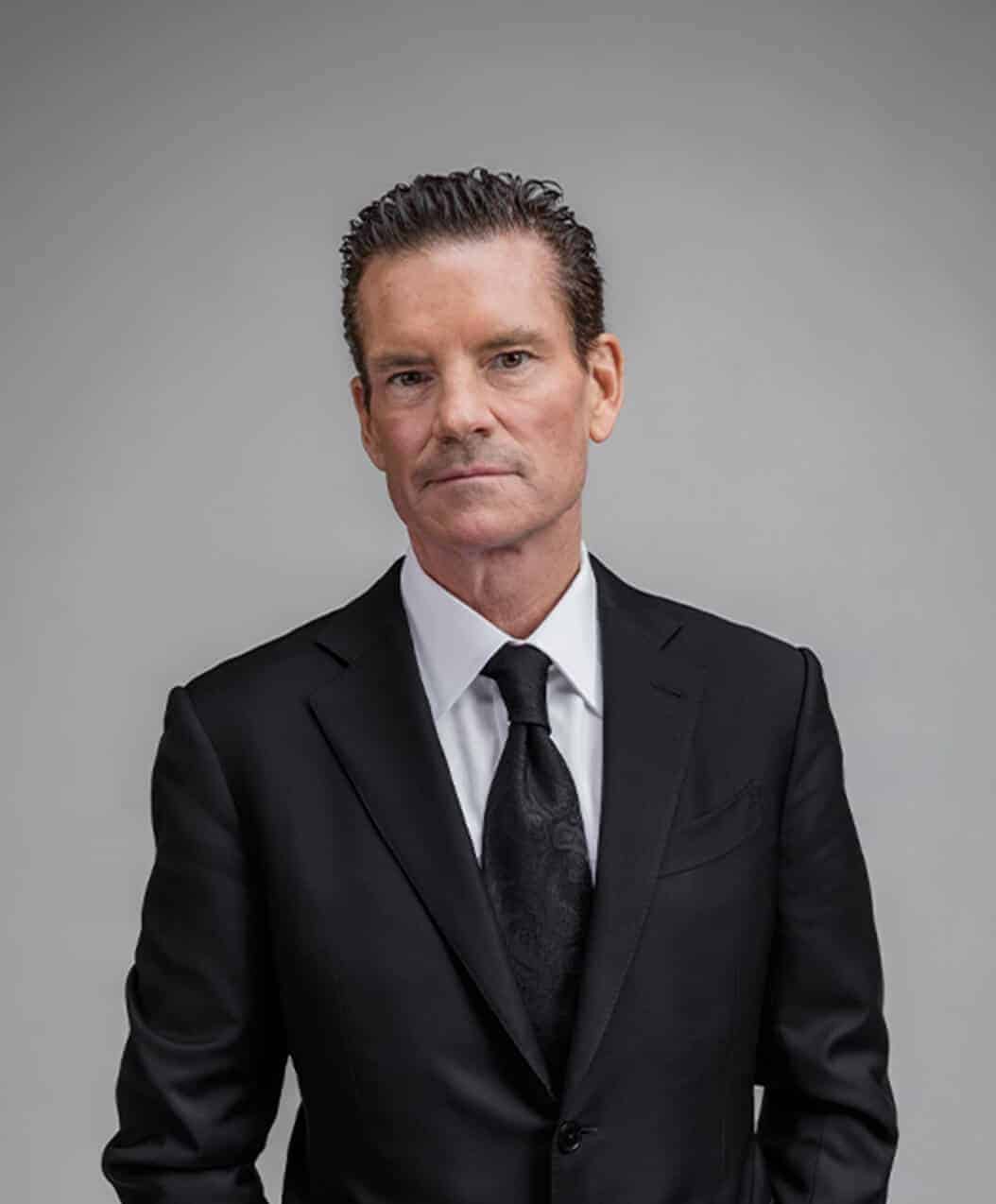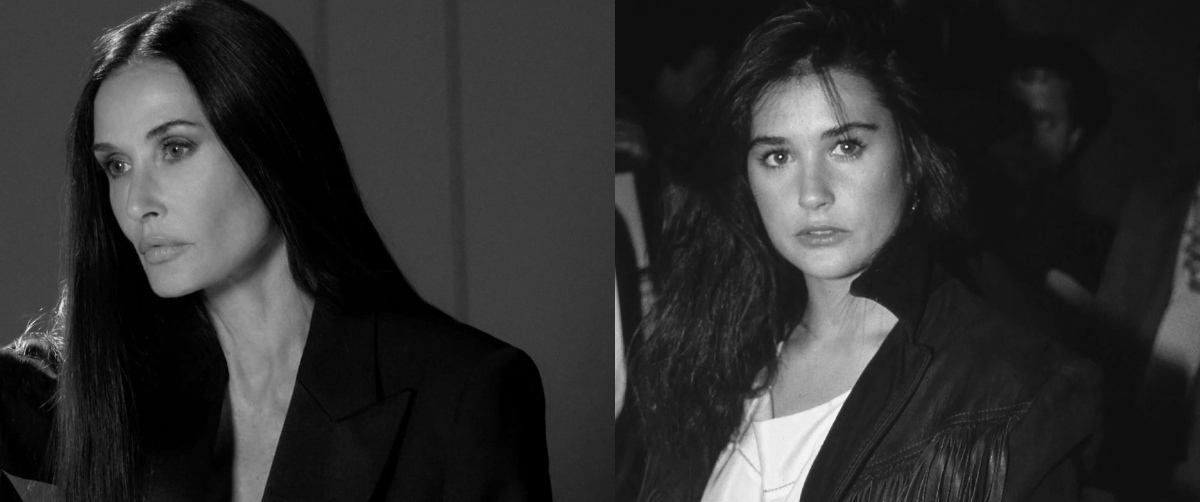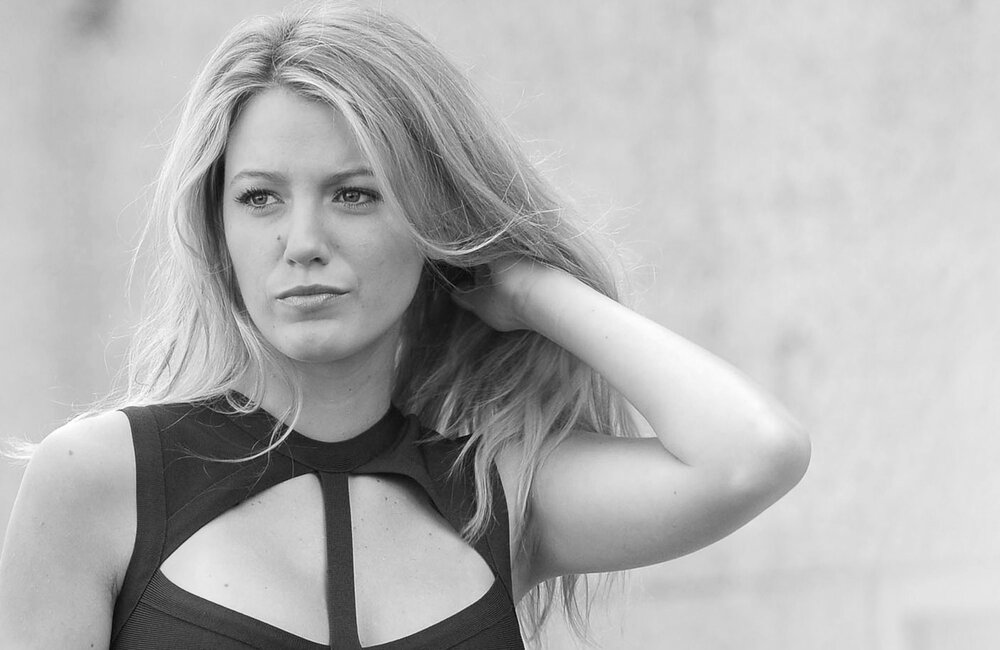June 30th, 2025
Dr. Mulholland, Md
In the world of cosmetic plastic surgery, the nose reigns supreme. While many people think that liposuction or breast augmentation is the leading surgical option among patients, they are not. While both make the top 5, rhinoplasty is the number one cosmetic procedure that patients opt for when seeking plastic surgery, for both men and women alike. In 2020 alone, rhinoplasty was performed over 352,000 times on those seeking the ideal nose shape.
The nose is a critical factor in a person’s facial appearance. Located right at the centre of the face, having a nose disproportionate to the rest of your face can throw off facial symmetry. When discussing the perfect nose shape, there’s no one correct answer; it’s all a matter of proportion.
In this blog, we’ll be discussing the shapes of noses, from the most common to the most often requested noses that our Toronto rhinoplasty clinic gets every day.
Cultural and Historical Significance Of Nose Shape
The shape and appearance of the nose hold significant cultural, historical, and psychological importance. Across different cultures and eras, the nose has been a focal point of beauty and identity, often influencing societal perceptions and individual self-esteem.
Aesthetic Importance
In various cultures, specific nose shapes are often considered ideals of beauty. For example, in Western cultures, a straight and proportionate nose is frequently associated with attractiveness, while in some Middle Eastern cultures, a prominent nose is admired and considered a sign of strength and character.
Throughout history, artists and sculptors have emphasized the nose in their works, recognizing its impact on the overall facial aesthetics. Classical sculptures from ancient Greece and Rome often feature noses that align with their cultural ideals of beauty, reflecting the importance of this facial feature in their art and society.
Cultural Significance
Nose shapes and sizes also carry deep cultural significance. In many African and Asian communities, the nose is seen as a symbol of heritage and identity. Specific nose shapes can signify ethnic background and familial lineage, connecting individuals to their roots and ancestry. For example, in some African cultures, broader nose shapes are often considered beautiful and are seen as a marker of ethnic identity. Similarly, in certain Asian communities, particular nose shapes are associated with familial heritage.
Rituals and rites of passage sometimes involve the nose, highlighting its cultural relevance. In some indigenous tribes, nose piercings or modifications are performed during significant life events, such as reaching adulthood or marriage. These rituals underscore the cultural importance of the nose beyond its aesthetic value.
Psychological Impact
The psychological impact of nose aesthetics cannot be understated. The nose, being a prominent facial feature, can significantly affect an individual’s self-esteem and confidence. People who perceive their noses as misaligned with societal beauty standards may experience feelings of self-consciousness or dissatisfaction with their appearance. This can influence social interactions, professional opportunities, and overall quality of life.
Conversely, achieving a nose shape that aligns with personal and cultural ideals can enhance self-confidence and psychological well-being. Many individuals who undergo rhinoplasty report a positive impact on their mental health, feeling more comfortable and satisfied with their appearance.
Historical Practices
Various cultures have historically practiced nose modification for aesthetic and symbolic reasons. In ancient India, rhinoplasty techniques were developed by the physician Sushruta as early as 600 BCE, often referred to as the “father of plastic surgery.” These procedures were not only for reconstructive purposes but also for enhancing beauty and social standing.
In other parts of the world, indigenous tribes have practiced nose reshaping and piercing as rites of passage or to signify social status. These practices underscore the long-standing cultural and historical significance of the nose.
What Makes a Nose?
We’ll be discussing the nose extensively throughout this blog, so it may be beneficial to first understand its components to better understand the structures described.
Three main components can categorize the nose:
Bridge
The bridge is the most structural part of your nose that keeps the rest of the nose held together. The bridge of your nose works to give a strong foundation for the other components of your nose to work.
Nostrils
Your nostrils are located at the bottom of your nose. The nostrils allow air to enter and exit the body, acting as the channel in which the air flows through your nasal cavity. In short, this is the part of the nose that allows you to breathe. As the nostrils flare when they breathe, some people are insecure about the size of them as they extend, feeling their nostrils are too “wide.”
Nose Tip
The dorsum, or nose tip, is the part of the nose connecting to the nostrils. This is the part of the nose that protrudes the furthest away from the face, and this is often a part of the nose people have complaints about looking too bulbous or attracting unwanted attention.
While women may desire a smaller nose with a delicate slope, men may want a male rhinoplasty that gives them the result of a prominent bridge that creates masculine asymmetry on their face. For this reason, TPS offers both female and male nose jobs.
Common Noses
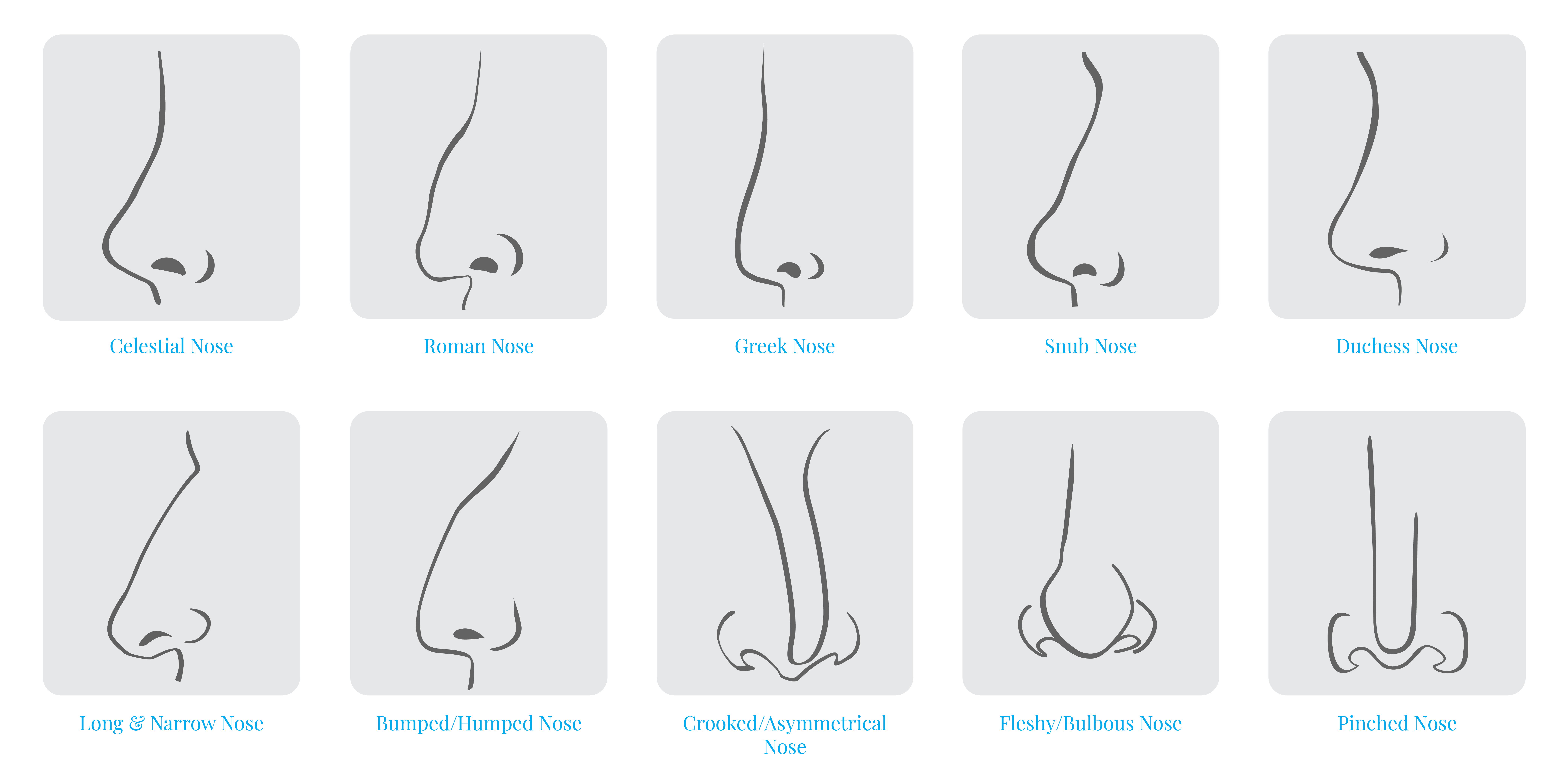
Now that we’ve elaborated on the three main components of the nose, you might wonder, “What is my nose shape?” Let’s discuss some of the most common types of noses that people have.
Bumped/Humped Nose
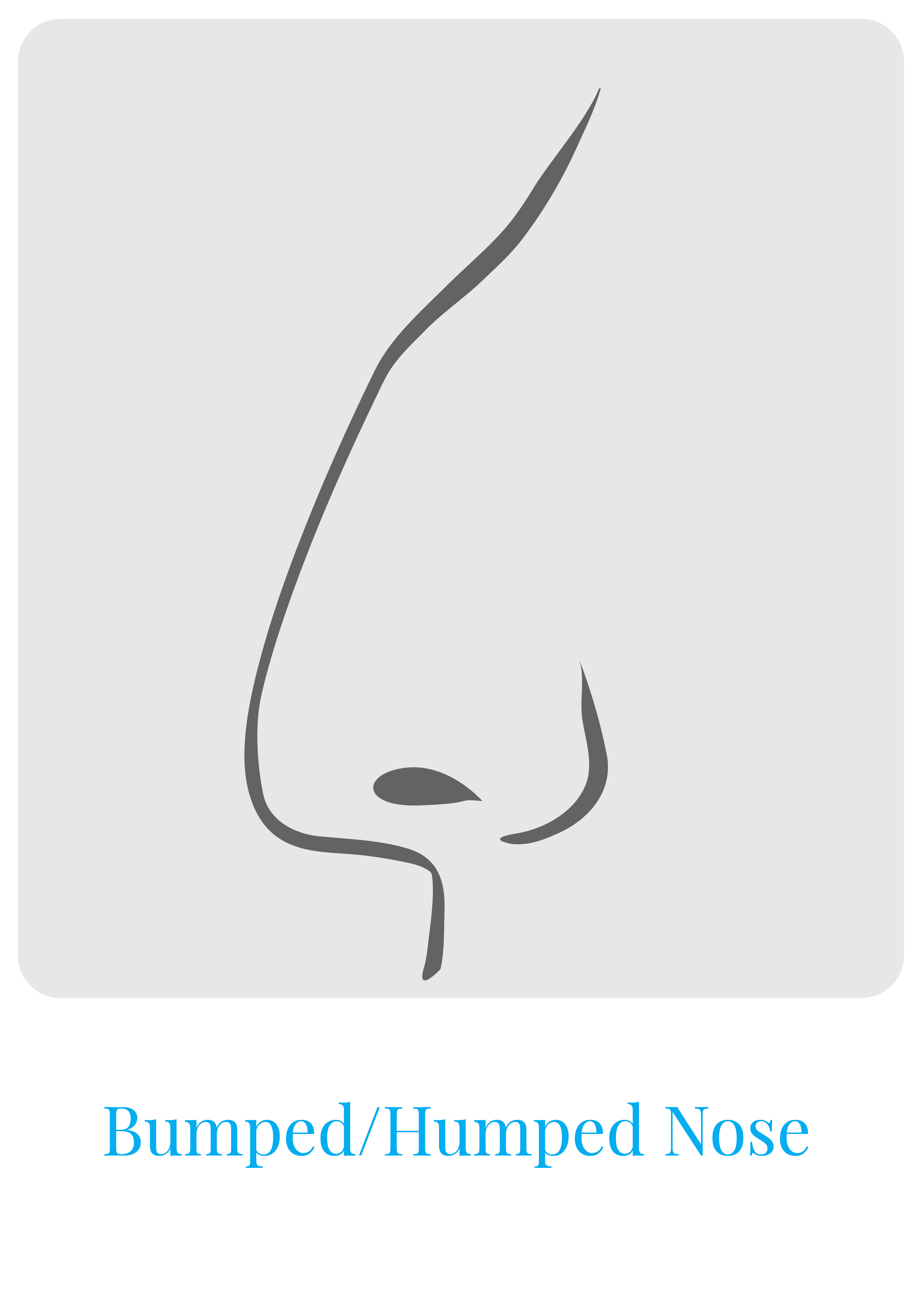
A humped nose is characterized by a noticeable bump or hump on the nose bridge. While some individuals are naturally born with this feature, a primary reason for a humped nose is physical injury, such as a broken nose. The size and shape of the hump can vary significantly, but it is usually most prominent when viewing the nose from the side. Actor Owen Wilson famously has a prominent hump in his nose due to having his nose broken twice during his youth.
Crooked/Asymmetrical Nose
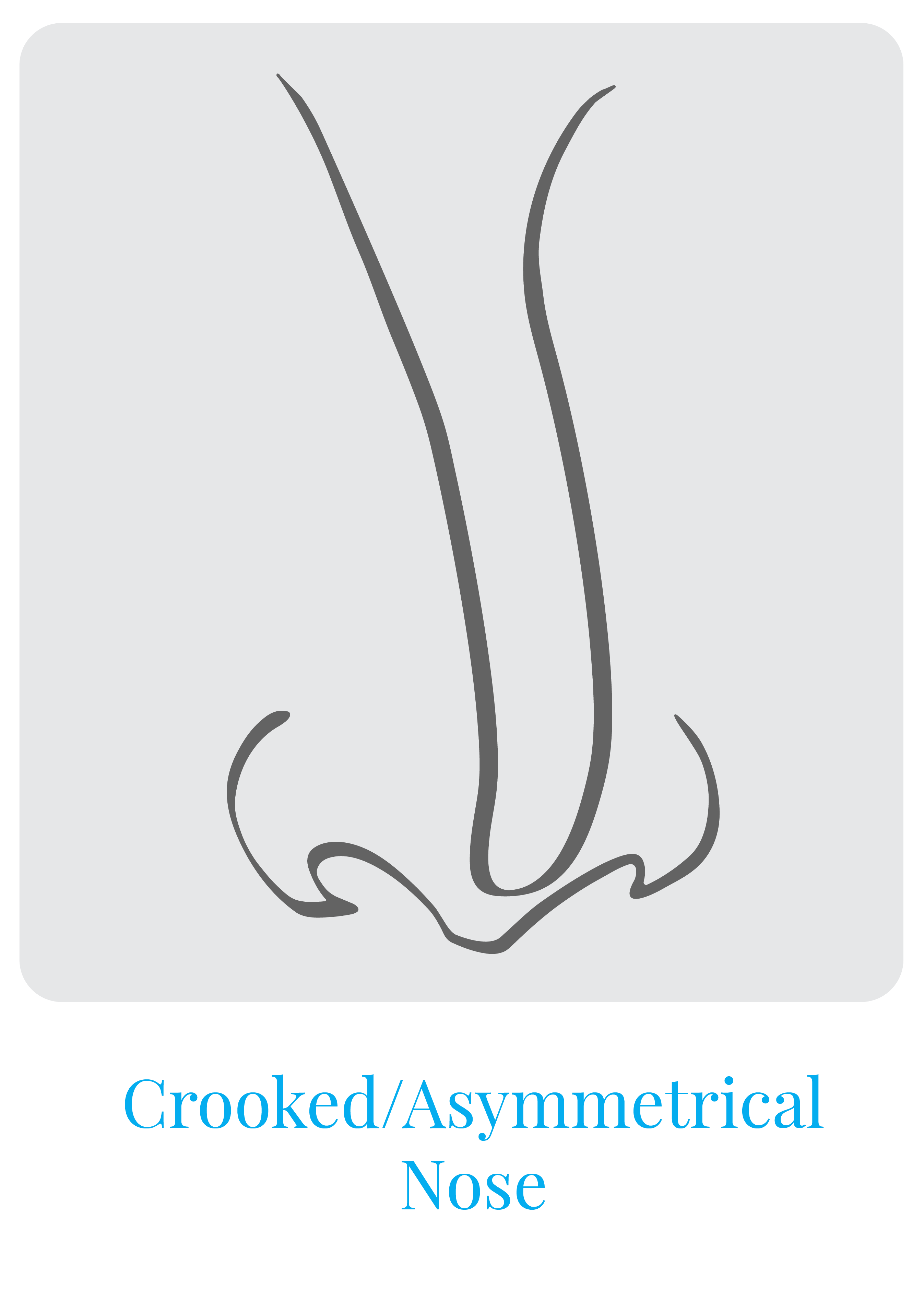
Symmetry is often associated with conventional attractiveness in facial features. An asymmetrical nose shape can disrupt the overall balance of the face. Asymmetrical noses are usually identified by curved and bent bridges, occasionally giving the bridge a bumpy appearance. In more severe cases, the curvature can impact breathing capabilities, a condition known as a deviated septum. Treatment for a crooked nose often involves septoplasty or rhinoplasty to improve both function and appearance.
Long and Narrow Nose
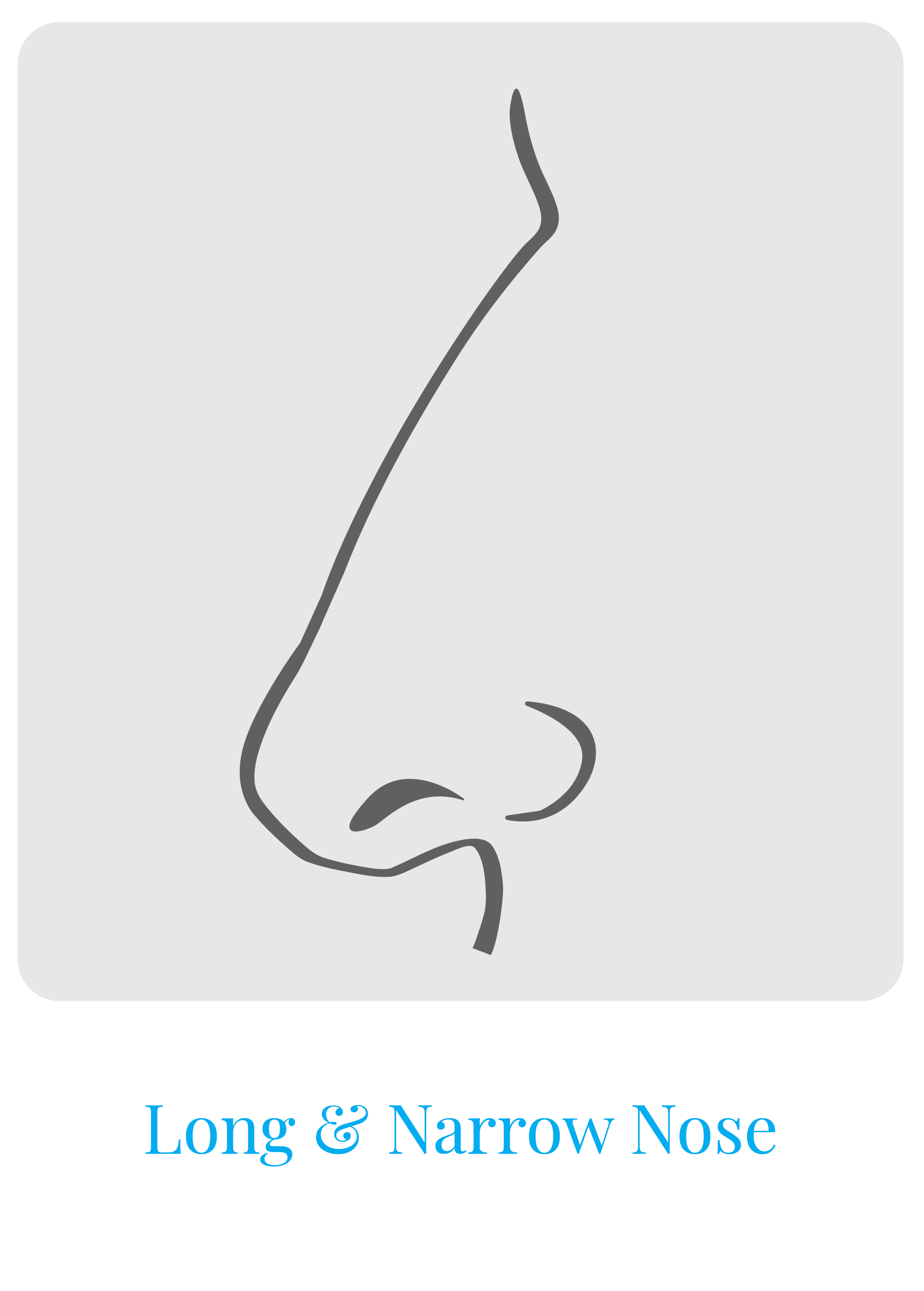
This nose shape is defined by a bridge that appears to extend longer vertically than what is proportional to the person’s face. The elongated bridge is usually due to the narrowness of the nose. Having a long and narrow nose can make the rest of the face appear disproportionately wider. This nose is sometimes referred to as a “hawk nose” due to its beak-like appearance. Correction typically involves shortening and/or widening the tip of the nose to create a more balanced look. Actor Adrian Brody has a long and narrow nose.
Pinched Nose
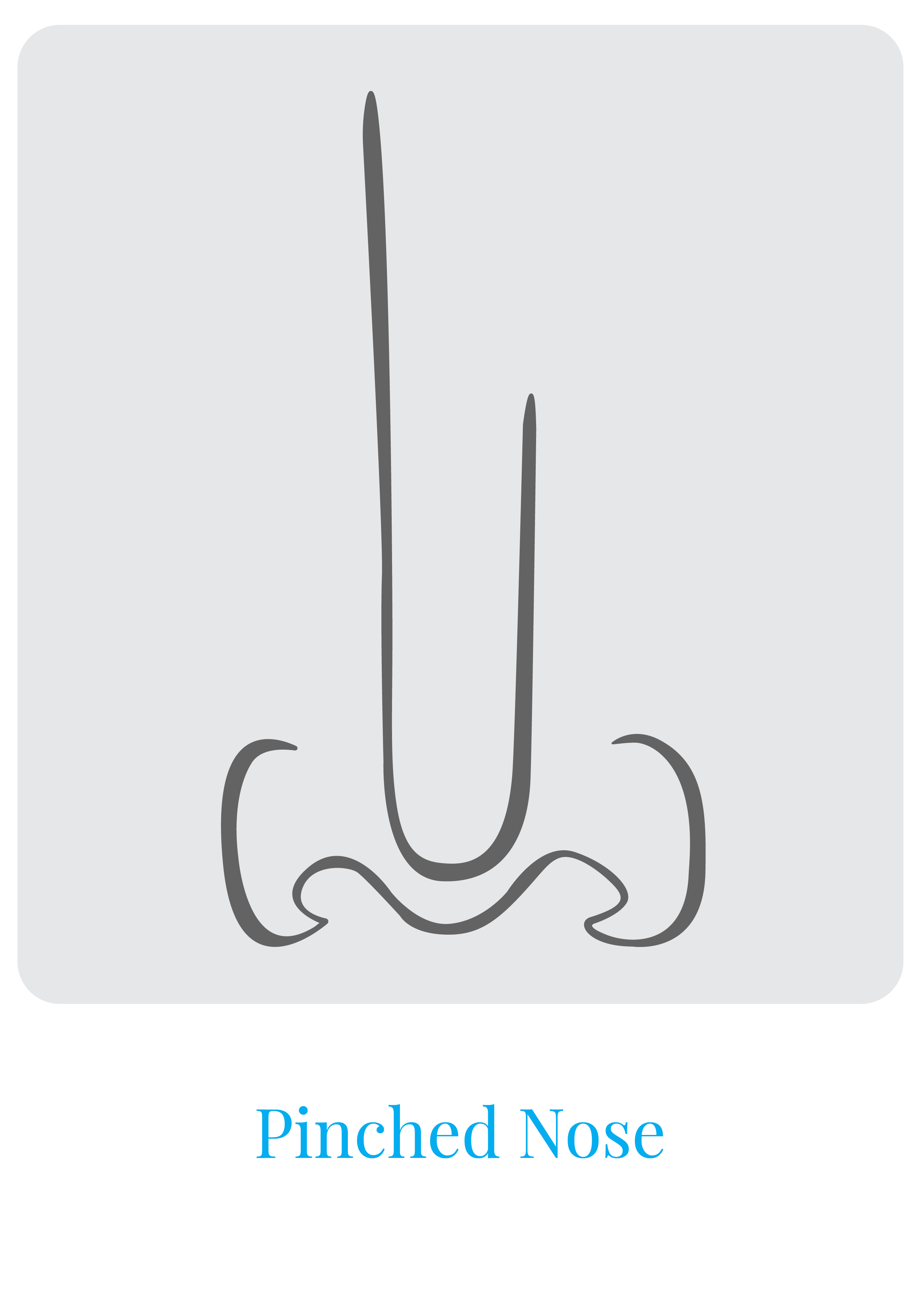
A pinched nose gives the appearance that the nostrils are pressed close together, as if they were being pinched closed with fingers. This nose shape can cause issues such as improper airflow and structural problems within the nose. It often results from an improperly performed rhinoplasty procedure. Our Toronto plastic surgery clinic offers reconstructive rhinoplasty to repair the bridge and restore proper structure. Some cases may require cartilage extraction from donor areas, such as the ears, to graft onto the nose, but this is not always necessary.
Fleshy/Bulbous Nose
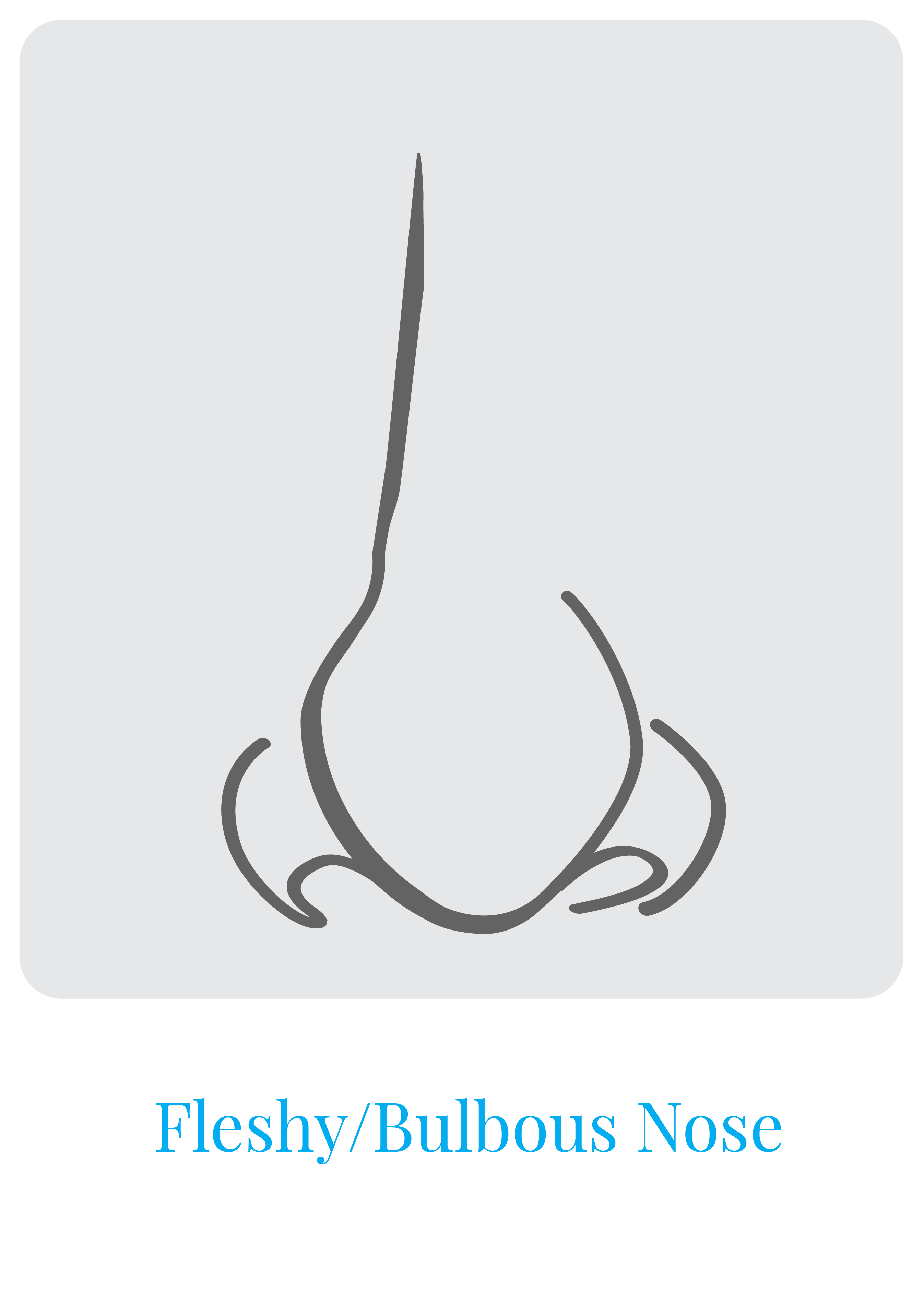
A bulbous nose is one of the more common shapes; roughly one in four people have one! This nose type is typically defined by a wider, bulb-like tip, a narrow bridge, and a rounded, drooping tip. A bulbous nose is often a genetically inherited trait. Rhinoplasty for this shape usually involves redistributing cartilage from more prominent areas to the narrower features, creating a more symmetrical appearance. Albert Einstein had a famously fleshy nose, as do celebrities such as Mark Ruffalo.
Understanding your nose shape can help you make informed decisions about potential cosmetic or functional corrections. Consulting with a qualified plastic surgeon can provide personalized recommendations based on your unique facial structure and desired outcomes. Whether addressing aesthetic concerns or functional issues, modern surgical techniques offer effective solutions to enhance both the appearance and functionality of your nose.
Most Desirable Noses
Now that you’re familiar with some of the many nose shape types that people commonly have, let us discuss a few of the most desirable nose shape types. These are the types of noses most sought after by those seeking cosmetic rhinoplasty.
Celestial Nose
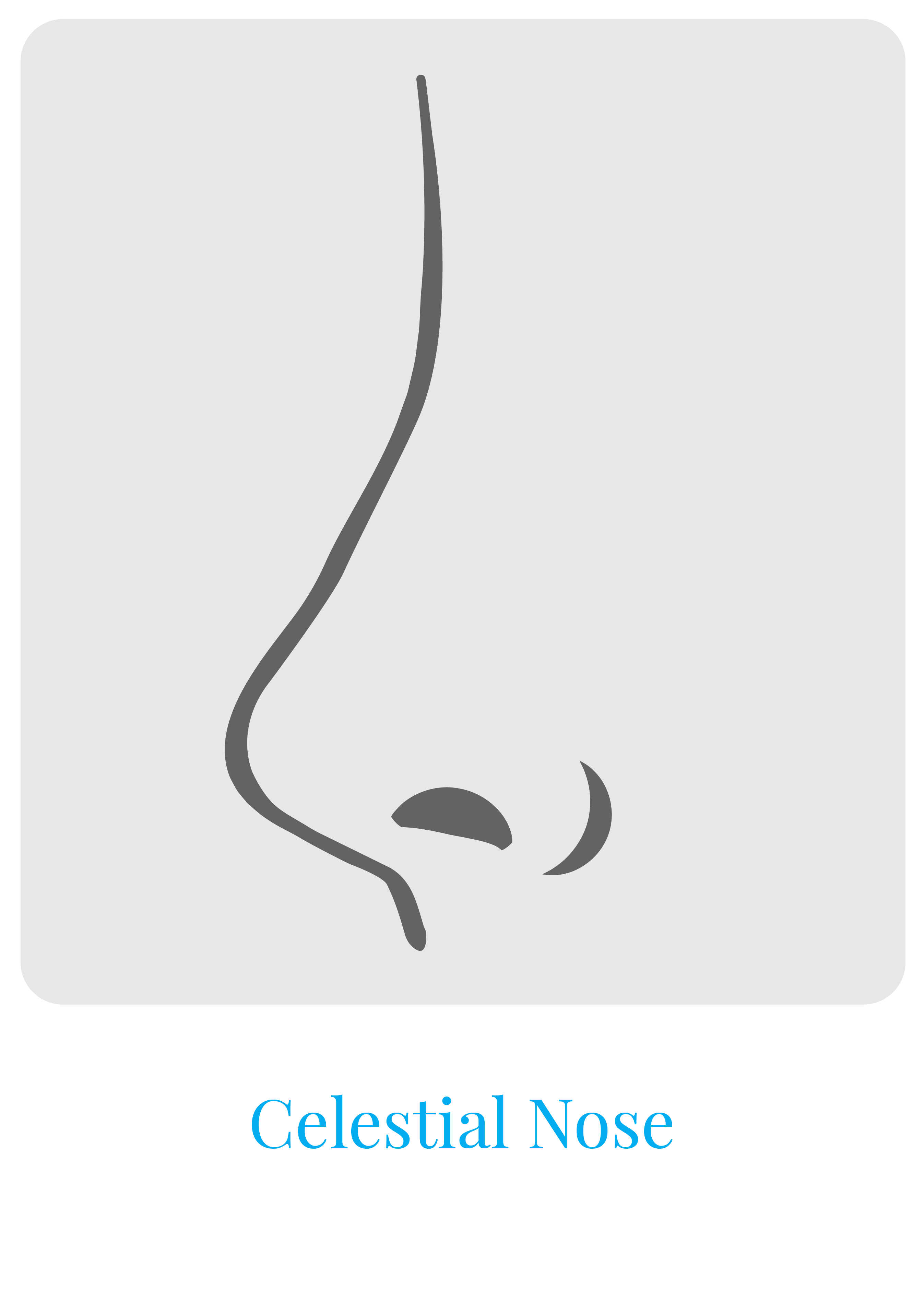
The celestial nose, also known as the upturned nose or the button nose shape, is defined by its small size, with a slight dent at the bridge of the nose and a tip that protrudes slightly. The celestial nose shape is currently one of the most popular requests from those seeking rhinoplasty, mainly to actress Emma Stone, who has this most attractive nose shape. Getting this button nose shape procedure proportionally done by a skilled plastic surgeon in Toronto is paramount, as overdoing the upturned nature of this nose can cause undesirable results.
Duchess Nose
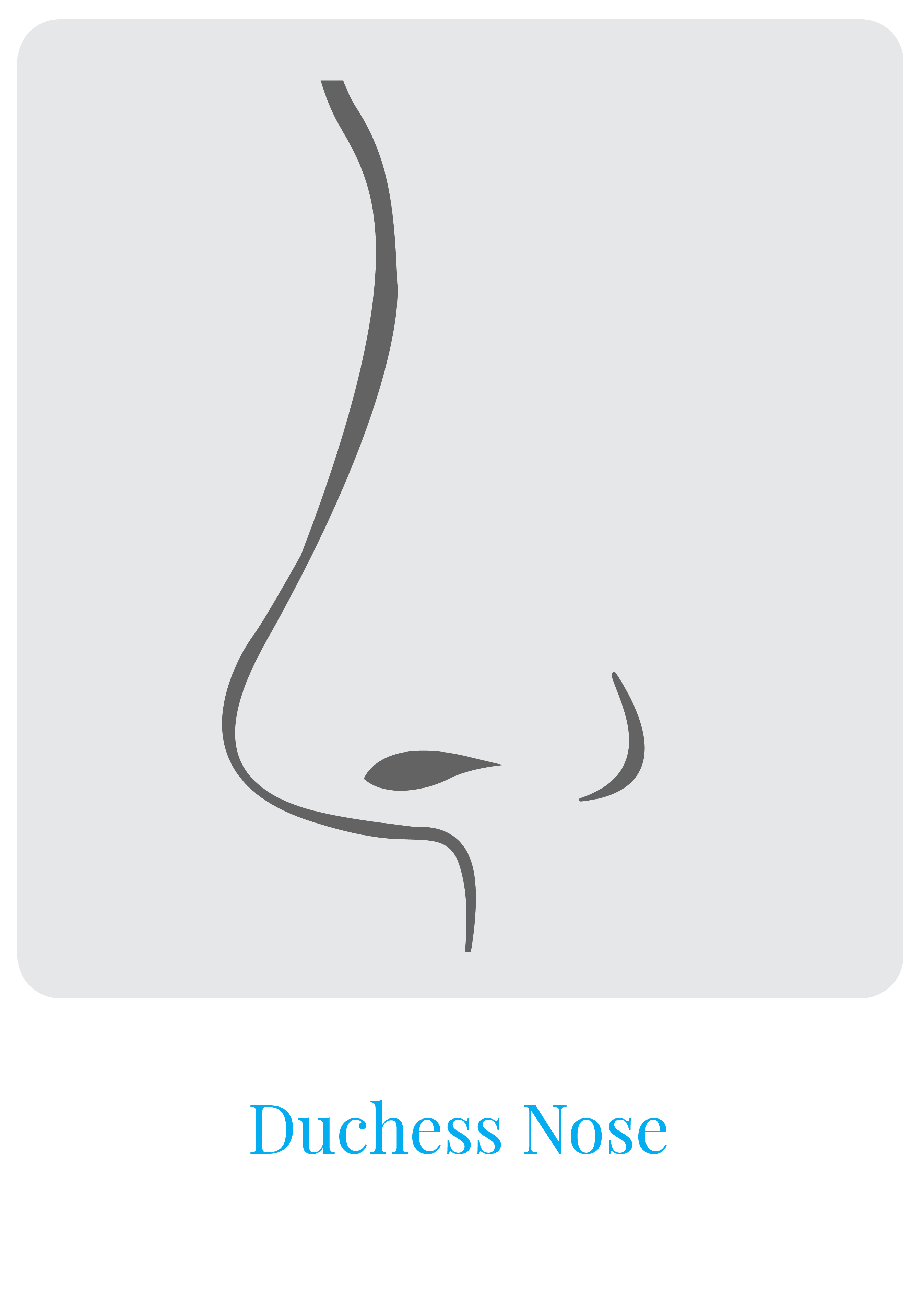
Ever since emerging into the royal spotlight, the popularity of those seeking the nose of Duchess of Cambridge, Kate Middleton, has skyrocketed.
The duchess nose shape is defined by its straight cut down the bridge, with a slight rotation and roundness at the tip. The duchess nose shape isn’t overly narrow either, fitting proportionality to the face.
Greek Nose
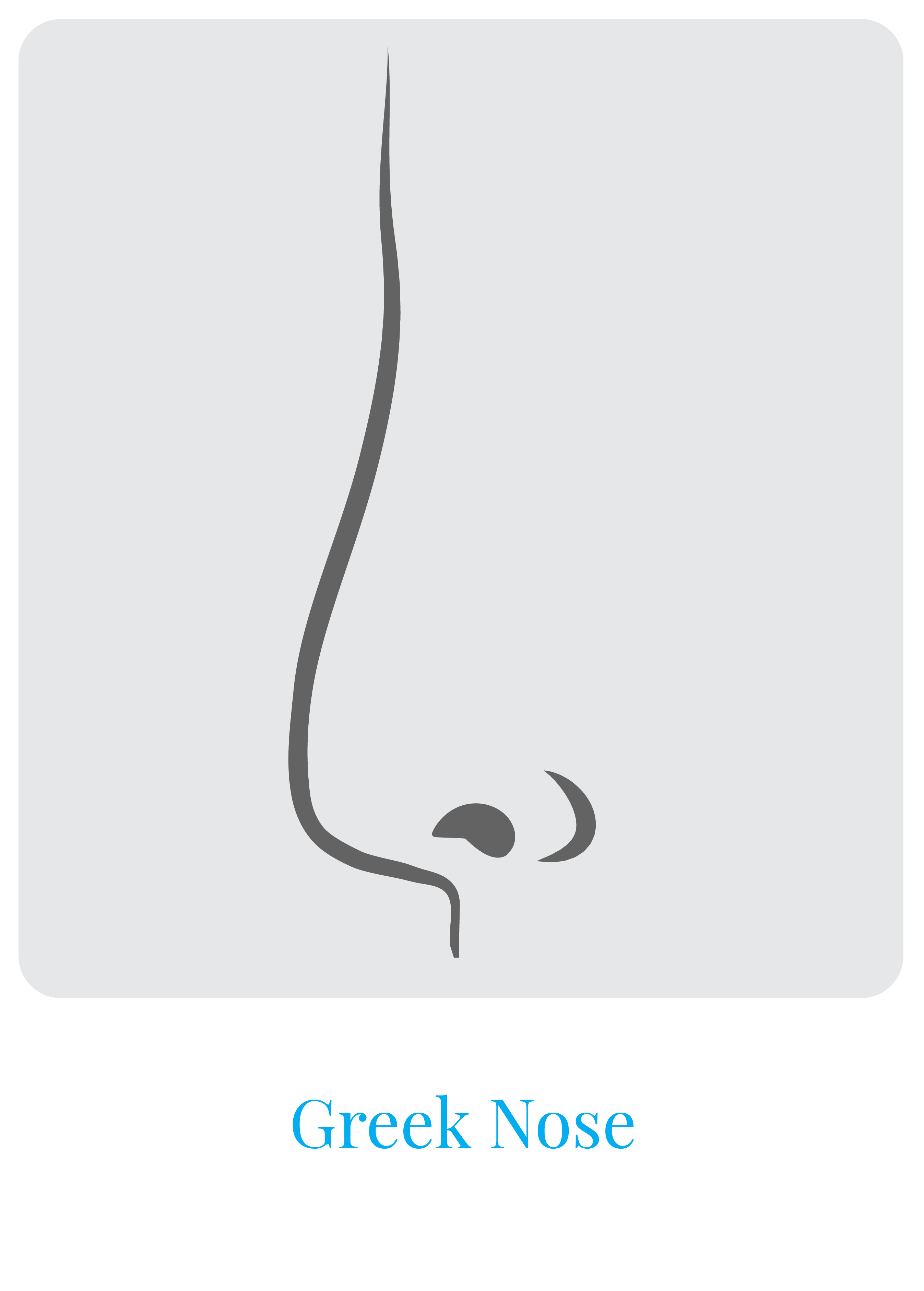
The Greek nose is named after the way noses are often sculpted on ancient Greek statues. This most attractive nose shape is defined by its impeccably straight bridge appearance, without any curvature of bends. This is similar to the duchess shape but does not feature the rounded tip. This is a sought-after nose, as having a nose without any deviations or curvature is rare. It’s thought that only 3% of people naturally have this best nose shape. Actress Jennifer Aniston is a prime example of this nose.
Roman Nose
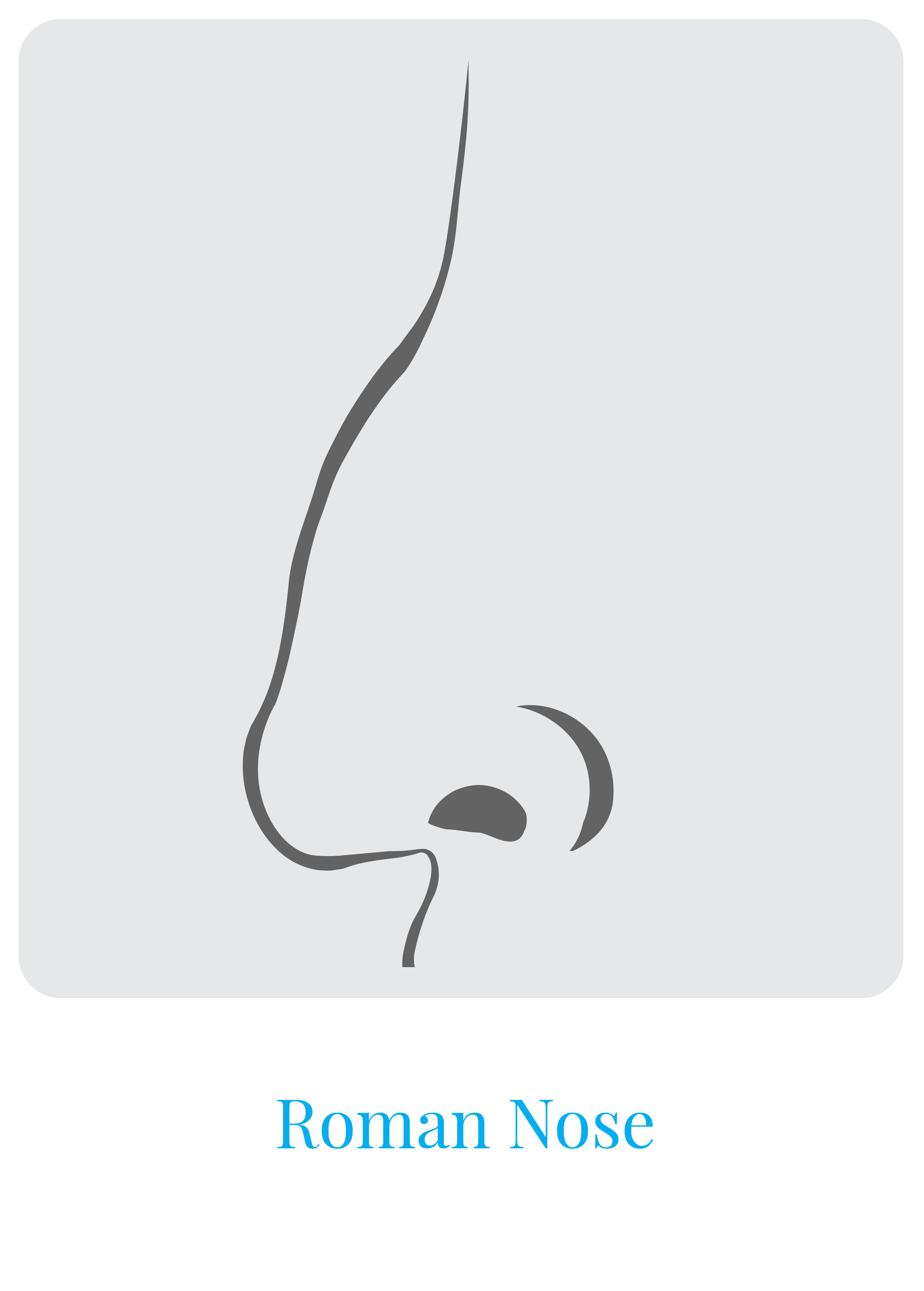
This is a variation of the Greek nose but far more commonly found in people than the Greek variant. This beautiful nose shape is named after the many human sculptures of ancient Rome. Unless the perfectly straight cut Greek nose, the Roman nose shape is defined by its stronger chiselled shape, with a slight curve that slopes the nose to protrude slightly from the face. The bridge of a Roman nose has a slight exaggeration and features a slight bend.
This is a popular nose shape desired by men for a more rugged appearance and is featured by the Hollywood elite like Tom Cruise and Ryan Gosling. This best nose shape can also suit many women; however, A-List actress Meryl Streep also sports this beautiful nose shape.
Snub Nose
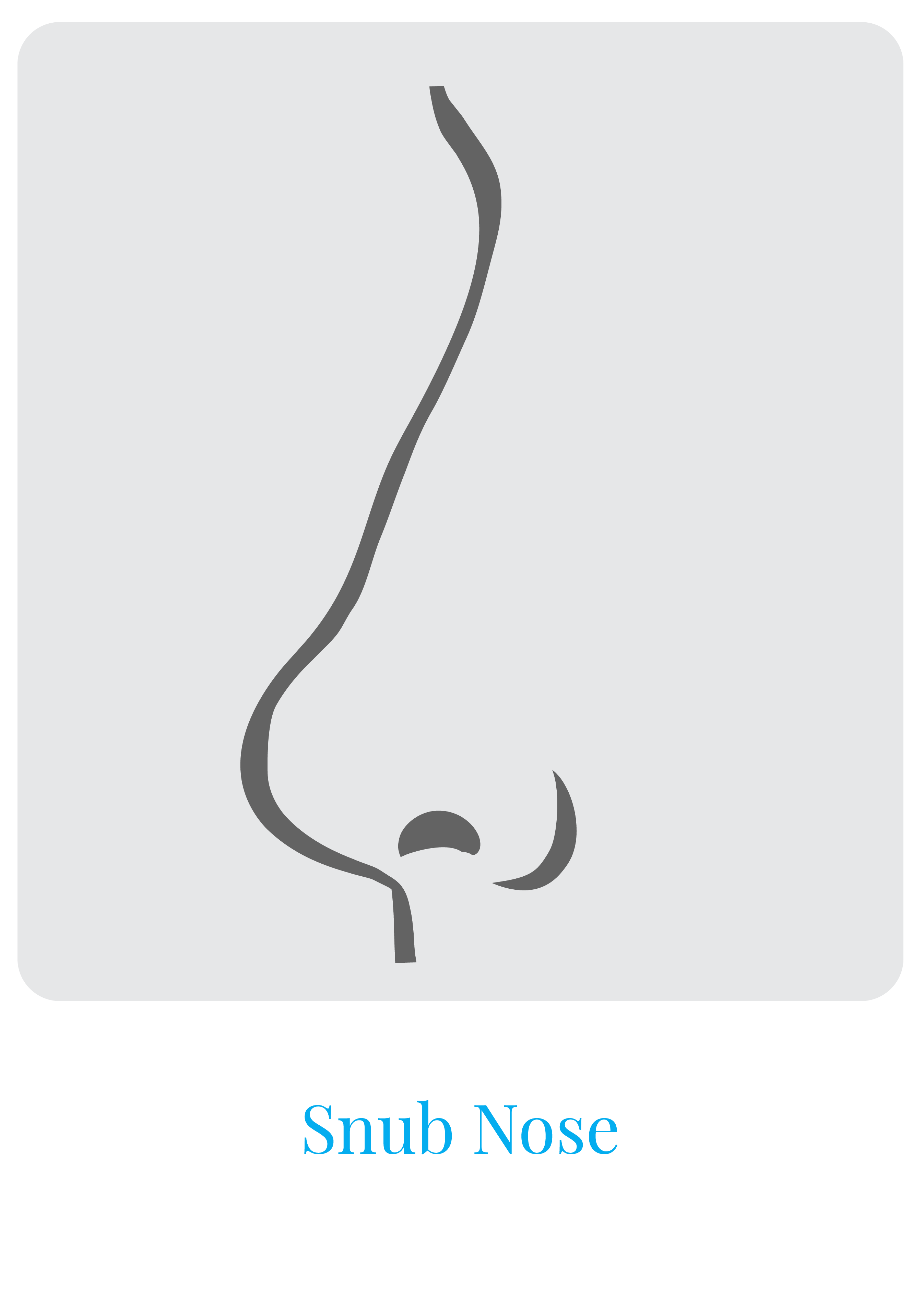
This nose is top-rated among women, as it is considered to be a more feminine appearing shape. The snub nose is known for its smallness in size, with a round tip and upward slope. Grace Kelly and Elizabeth Taylor featured this style of the nose.
Rhinoplasty at Toronto Plastic Surgeons
So now that we know more about the shapes people seek out, your next question might be, “can you change the shape of your nose.” The answer is almost always yes. Let’s talk about how we perform the procedures and the many types of nose surgery we offer at our clinic.
Traditional Rhinoplasty
During a traditional rhinoplasty, our goal is to create your perfect nose. While the shapes and styles will vary, the goal is almost always the same: To improve symmetry.
Having a nose that is proportional and symmetrical to your face can drastically improve a person’s appearance. Usually, this process doesn’t involve changing just one thing but a multitude of features at once. For example, simply removing an unwanted bump from the bridge of the nose may create an unwanted appearance of unalignment, thus straightening the nose may also be necessary. When slimming the nose tip, nostrils may also have to be reshaped smaller, so they appear proportional to the rest of the nose.
Traditional rhinoplasty can also treat a deviated septum, as more severe cases may require visible structural changes. This is not always the case, however (More on this later).
There are two main types of traditional rhinoplasty; open and closed.
Open rhinoplasty refers to a more in-depth rhinoplasty that has more invasive surgical elements to it. This allows for easier manipulation of structural changes like bone and cartilage. This is the style used to treat size changes, protrusions and bumps, and bulbous tip shapes to create an ideal nose shape. This is also the technique that is commonly used during revision rhinoplasty.
Closed rhinoplasty is a less invasive rhinoplasty performed by making incisions inside the nose rather than the outside, working instead through the nostrils. This method is often used to correct nasal obstructions, reduce bridge bumps or minor concerns with nose tips. However, as this is a less invasive rhinoplasty, major structural changes to the nose will be unlikely through this method.
The 5-Minute Nose Job
Our team here at the Toronto Plastic Surgeons has helped to revolutionize this modern method of rhinoplasty. This procedure involves no surgical process instead of utilizing injectable dermal soft tissue fillers such as Juvederm or Restylane.
While no surgical structural changes are made, the fillers can help impact things like bumps on the nose bridge, scoops, and nose tip issues. This procedure takes virtually no time at all, does not require anesthesia, and features no downtime.
Septoplasty
One of the biggest myths about nose jobs is that they are purely cosmetic.
We mentioned earlier how rhinoplasty could be used to treat a deviated septum. The septum is a thin wall of bone and cartilage located between the nostrils, going up the centre of your nasal passageways. In an ideal scenario, the septum would perfectly align straight up the length of your nose. However, in more cases than not, the septum deviates to one (or both) sides, causing a slight blockage in the nasal passageway. A deviated septum can occur either through natural genetic formation or due to injuries which cause breakage.
Having a deviated septum is incredibly common – it is estimated close to 80% of people have one. In most cases, the deviation is usually subtle enough that most go their whole lives without noticing. However, in cases of a more significant deviation, symptoms such as breathing problems, nosebleeds, infection, snoring and sleep apnea may all be prevalent.
While many people opt for traditional rhinoplasty to allow cosmetic changes to be performed when treating a deviated septum, as the nose is undergoing surgery regardless, some only desire the deviation itself to be corrected, with no additional changes to be made. This procedure is referred to as septoplasty (deviated septum surgery). While septoplasty only targets the septum’s deviation, some may find their nose has correctively changed post-surgery if the deviation created a noticeable curve or bend in the nose.
Revision Rhinoplasty
While most rhinoplasty procedures are a success, our clinic is happy to treat an improper rhinoplasty procedure that other clinics have performed.
During these cases, we assess with you the concerns of your previously “botched” rhinoplasty and work to perform revisions to give you the nose you have always wanted. We do request you attempt to hold off for at least two years after your initial rhinoplasty procedure before seeking us out for revisions, as the nose needs that time to reach the full effects and come into its final shape.
FAQs
How do I know which nose shape is right for my face?
A consultation with a skilled plastic surgeon, like Toronto Plastic Surgeons, can help determine the best nose shape for your facial features and proportions.
Is it possible to achieve a natural look if changing from a very distinctive nose shape?
Yes, a skilled plastic surgeon can achieve a natural look by carefully balancing the nose’s new shape with your facial features.
Can you adjust my nose to resemble a specific celebrity’s nose shape?
While it’s possible to take inspiration from celebrities, the final result should be a shape that harmonizes with your unique facial structure. However, during your consultation, we always encourage you to bring photographs of nose shapes that you prefer.
Call Us Today
If you’re feeling insecure about your nose and wondering to yourself, “should I get a nose job?” we can help. By scheduling a consultation online or calling us at 647-723-3739, you can speak with a member of our clinic, who can get you started with how to change your nose shape and begin your journey to the perfect nose shape you’ve always dreamed of.
